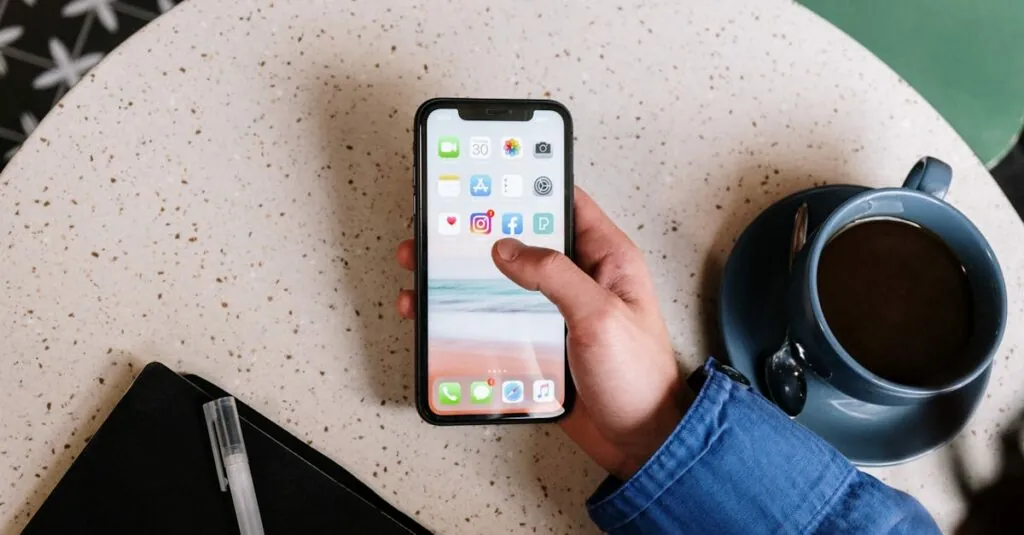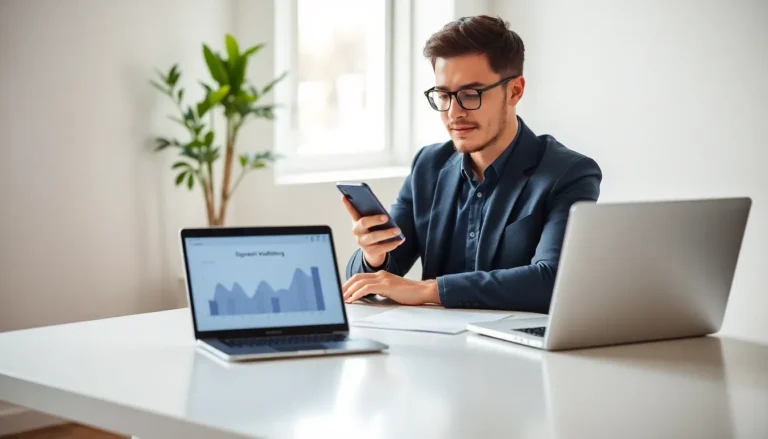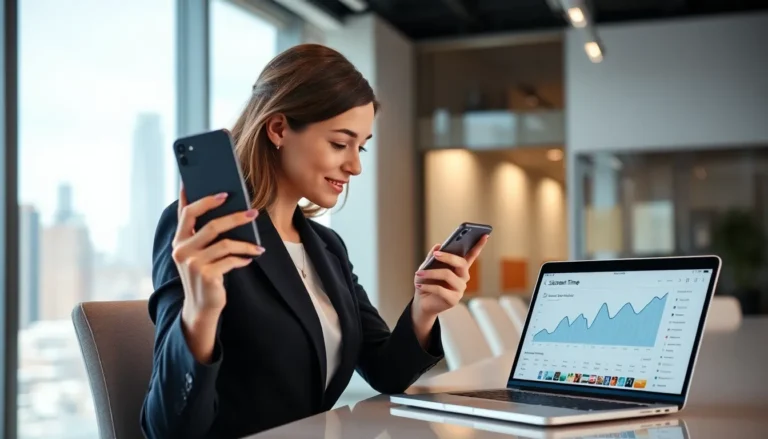Table of Contents
ToggleIn a world where distractions lurk at every swipe, keeping your iPhone apps under wraps can feel like a game of hide and seek. Whether it’s that pesky social media app or those addictive games, sometimes you just need a little peace and quiet. But what if Screen Time isn’t your cup of tea? Don’t worry, there are sneaky ways to lock those apps without resorting to Apple’s built-in features.
Understanding App Locking on iPhone
App locking on an iPhone serves as a vital tool for those wishing to minimize distractions. Various methods exist to lock apps without relying on the Screen Time feature. Users often seek ways to restrict access to specific apps such as social media or games.
Third-party apps provide an efficient solution. These applications allow users to set passwords or use biometric security, like Face ID or Touch ID, to access certain apps. Popular options include AppLocker, KeepItInstalled, and other app locking tools available in the App Store.
Creating folders on the home screen can help minimize distractions as well. By placing apps into designated folders and moving those folders to the last page of the home screen, users can reduce the temptation to open them frequently. This method may not lock apps outright but can discourage usage.
Utilizing shortcuts through the Shortcuts app adds another layer of control. Users can create specific actions that limit app usage without directly locking them. This feature allows customization, where specific actions can lead to a more selective app experience.
Ultimately, effective app locking enhances focus and productivity. By implementing these strategies, users reclaim control over their device and manage distractions effectively. Each method provides unique advantages, catering to diverse preferences and needs.
Methods to Lock Apps on iPhone
Several methods exist to lock apps on iPhone without using Screen Time. These alternatives allow users to manage distractions effectively.
Third-Party App Lockers
Third-party app lockers provide effective solutions for locking apps. Popular options include Apps Lock and Locker. These applications often offer password protection or biometric security features like Face ID and Touch ID. Users can set up a code or use their fingerprint to restrict access to specific apps. Security may vary across different applications, so it’s important to review their ratings and privacy policies before selecting one. Some app lockers even allow users to hide app icons, making them invisible on the home screen. Such features enhance privacy and help maintain focus.
Alternative Settings
Alternative settings on the iPhone can help minimize distractions from apps. For example, users can utilize restrictions in the General Settings to limit accessibility. This feature permits users to block specific apps entirely or restrict app deletion. Adjusting notification settings also plays a crucial role in curbing distractions. Disabling notifications for certain apps reduces interruptions. Furthermore, creating app folders on the home screen moves distracting apps to less visible areas, making them less enticing. Users can even employ the Shortcuts app to automate actions like minimizing app usage. These adjustments offer a practical way to gain control over app access while enhancing productivity.
Pros and Cons of Locking Apps
Locking apps on an iPhone offers several benefits and drawbacks. Users must weigh these when deciding how to manage distractions effectively.
Advantages of App Locking
App locking enhances focus by preventing access to distracting applications. Users can maintain productivity by limiting time spent on social media and games. Enhanced privacy comes with locking apps, ensuring sensitive information remains secure from unauthorized access. Additionally, employing third-party locking apps can provide features like hiding app icons, which further minimizes temptation. Using biometric security methods such as Face ID or Touch ID adds an extra layer of protection, making unauthorized access significantly more difficult.
Disadvantages of App Locking
Locking apps may lead to frustration, especially if users forget passwords or encounter technical issues. These barriers can disrupt workflow and hinder access to necessary tools. Third-party apps might require payment or subscriptions, adding to the cost of managing distractions. Some users may find inadequate support or limited functionality in certain locking apps. Over-reliance on app locking solutions could also result in missed opportunities for developing self-discipline and managing time effectively.
Tips for Effective App Locking
Utilizing third-party apps offers a straightforward way to secure access to apps on an iPhone. Many of these apps support password protection, making unauthorized access difficult. Face ID and Touch ID features provide an extra layer of security for users who prefer biometric options.
Storing apps in folders decreases visibility and reduces temptation. Organizing frequently used apps away from the home screen simplifies accessing essential tools while limiting distractions from less important ones.
Employing the Shortcuts app can also limit usage without complete lockdown. Custom automations allow users to set timers for app usage, promoting responsible engagement with apps. Timers help reinforce healthy usage habits.
Adjustments in General Settings can enhance overall focus. Users can restrict app notifications to minimize interruptions, helping maintain concentration during productive times. Specific adjustments allow prioritization of important alerts and silence less critical ones.
Exploring the benefits and drawbacks of these methods proves important for effective app management. Enhanced privacy and improved focus serve as notable advantages, while challenges like forgotten passwords and potential subscription costs must be considered.
Each method presents distinct advantages, appealing to various user preferences. Informing oneself about these strategies enables better decisions, allowing individuals to reclaim control over their iPhone experience.
Locking apps on an iPhone without using Screen Time offers a range of effective alternatives. By utilizing third-party apps or customizing settings within the device, users can significantly reduce distractions and enhance their focus. These methods not only provide privacy but also encourage healthier app usage habits.
It’s essential to consider both the pros and cons of these strategies to find the best fit for individual needs. With the right approach, anyone can take charge of their iPhone experience and cultivate a more peaceful digital environment.








